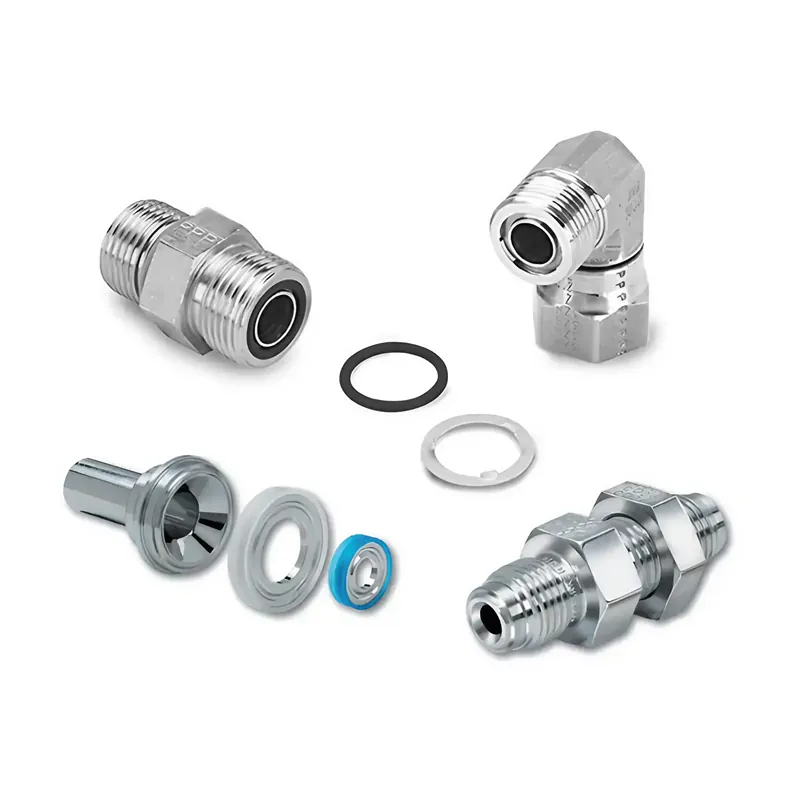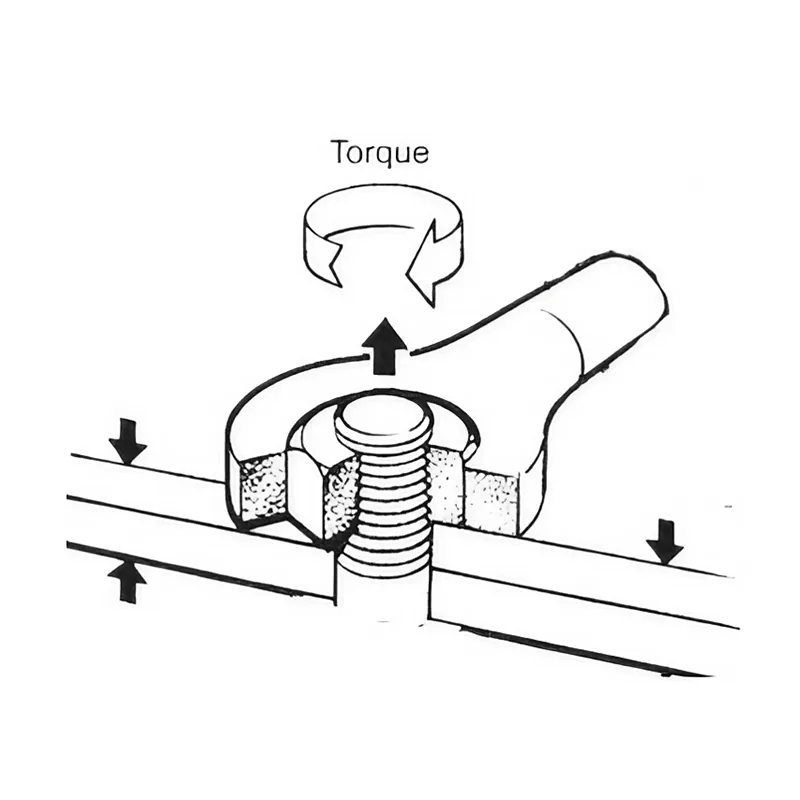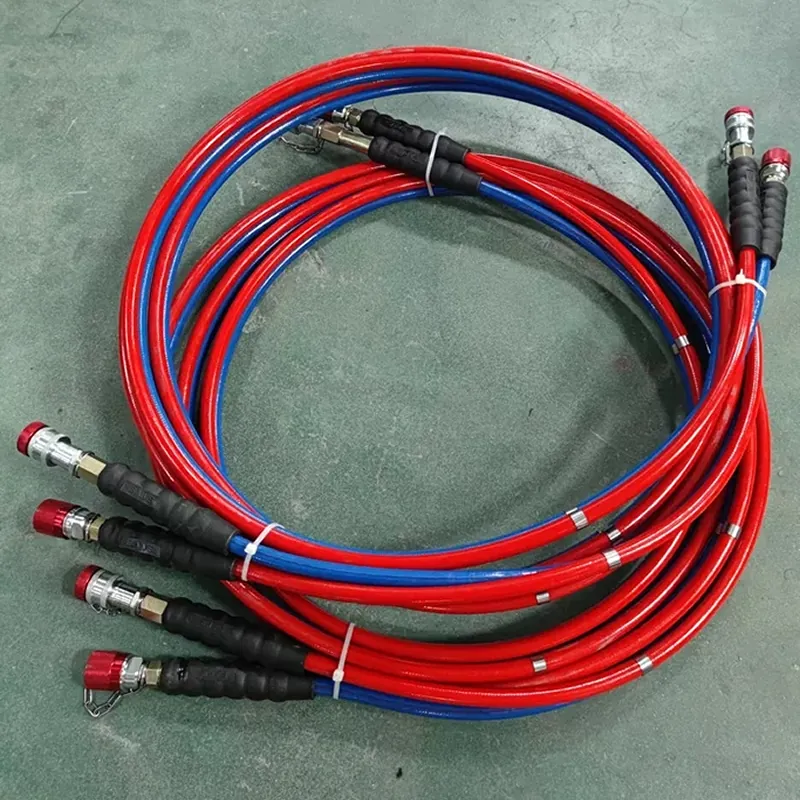Hydraulic Hose Fitting: Everything You Need to Know for Safe and Reliable Connections
hydraulic hose fittings are essential components of Hydraulic Systems. They connect hydraulic hoses to Hydraulic Components, such as pumps,
cylinders, and valves.
Properly tightened hydraulic hose fittings are critical to ensuring the safety and reliability of hydraulic systems.
Hydraulic Hose Fitting Basics
There are many different types of hydraulic hose fittings, each with its advantages and disadvantages. The most common types of hydraulic hose fittings include:
Compression fittings: These fittings use a compression ring to seal the connection between the hose and the fitting.
Flare fittings: These fittings use a flared end on the hose to create a seal with the fitting.
O-ring fittings: These use an O-ring to seal the connection between the hose and the fitting.

Compression-and-seal fittings: These fittings combine the features of compression fittings and O-ring fittings.
Choosing the Right Torque Wrench
The type and size of the hydraulic hose fitting will determine the type of torque wrench needed.
For example, compression fittings typically require a torque wrench with a socket adapter. Flare fittings typically require a flare nut wrench.
O-ring fittings and compression-and-seal fittings can be tightened with a standard torque wrench.

When choosing a torque wrench, it is important to consider the following factors:
Torque range: The torque range of the torque wrench should be sufficient to tighten the hydraulic hose fitting to the specified torque.
Accuracy: The torque wrench should be accurate enough to ensure that the hydraulic hose fitting is tightened to the correct torque.
durability: The torque wrench should be durable enough to withstand the rigors used in a hydraulic system.
If you are interested in purchasing a torque wrench, feel free to explore our product section by clicking on the dedicated category:
https://www.saivstool.com/products/hydraulic-torque-wrenches/
How to Install Hydraulic Hose Fittings: A Step-by-Step Guide
Step 1: Measure and Cut the Hose
Measure accurately: Before anything else, precisely measure the required length of the hydraulic hose for your specific application.
Ensure you have enough slack for movement and proper routing, but avoid excess length that can become cumbersome or prone to kinks.
Cut cleanly: Use a dedicated hose cutter to achieve a clean and perpendicular cut at the hose ends.
Avoid using saws or other tools that might leave ragged edges or introduce contaminants.

Step 2: Choose the Right Fitting
Match the specifications: Selecting the correct fitting is vital for compatibility and performance.
Consider factors like hose size, pressure rating, temperature range, thread type, material, and orientation.
Consult the manufacturer's specifications for your hose and system to identify the ideal fitting match.
Account for fluid compatibility: Ensure the chosen fitting is compatible with the type of hydraulic fluid used in your system.
Different fluids have varying chemical properties and require compatible materials to prevent corrosion or degradation.
Step 3: Mark and Insert the Hose
Measure insertion depth: Locate the recommended insertion depth for the chosen fitting on the manufacturer's specifications or a technical chart.
Mark this depth clearly on the hose using a permanent marker.
Lubricate and insert: Apply a light coat of hydraulic-grade lubricant to the hose end for easier insertion and improved seal.
Carefully insert the hose into the fitting until the mark reaches the fitting's internal shoulder.
Step 4: Crimp with Precision
Choose the right crimper: Select a hydraulic crimper compatible with the chosen fitting diameter.
Refer to the manufacturer's instructions or a crimp chart for specific crimping parameters and adjustments.
Position the hose: Place the hose assembly within the crimping machine, ensuring proper alignment with the crimping dies.
Crimp and verify: Follow the crimping instructions carefully, applying the appropriate force and duration as specified.
Once complete, visually inspect the crimp for uniformity, tightness, and any potential defects.
Avoiding Overtightening
Overtightening a hydraulic hose fitting can damage the fitting or the hose. It can also lead to leaks and other problems.
To avoid overtightening a hydraulic hose fitting, it is important to use the correct torque wrench and follow the manufacturer's instructions.
It is also important to check the fitting after it is tightened to make sure that it is not leaking.
Damage to the fitting: Overtightening can cause the fitting to deform or crack. This can lead to leaks or other problems.
Damage to the hose: Overtightening can cause the hose to rupture. This can lead to leaks or other problems.
Leaks: Leaks can occur if the fitting is not tightened to the correct torque. Leaks can lead to contamination of the hydraulic system and other problems.
Recommended torque specifications
The recommended torque specifications for hydraulic hose fittings can vary depending on the type of fitting and the size of the hose.
The manufacturer's instructions should always be consulted for the specific torque specifications for a particular fitting.
*Safety
When working with hydraulic hose fittings, it is important to take the following safety precautions:
Use the correct tools. Use the correct torque wrench to tighten the fitting to the specified torque.
Wear safety glasses. Wear safety glasses to protect your eyes from flying debris.
Work in a well-ventilated area. Hydraulic fluid can be hazardous if it is inhaled or comes into contact with the skin.
SAIVS offers a comprehensive range of high-quality and dependable hydraulic hoses and fittings. Our products are designed to meet the stringent requirements of various hydraulic applications, ensuring you get the best performance and value for your investment.
Why Choose SAIVS™ as Your Supplier?
With 20 years of industry experience, SAIVS is a leading Chinese manufacturer of high-quality tools, offering competitive pricing and excellent customer service.We pride ourselves on exceptional quality control, extensive experience, and comprehensive after-sales service.